$8799
5 Stars
If you think that traditional floorstanding stereo speakers are a thing of the past, then think again. Here’s a loudspeaker that has the whiff of revolution about it, claims Gary Steel.
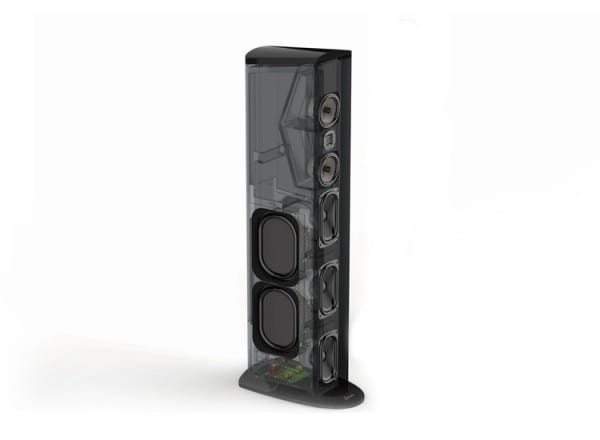
YOU KNOW THAT thing where you’re cruising along, reasonably happy with what you’re getting out of your hi-fi, and something turns up out of the blue to blow your mind? I wasn’t quite ready for that, and I put all the blame on American company GoldenEar, and specifically, their flagship Triton One speaker, which call for pretty much a serious readjustment of one’s prejudices.
I’d read the rave reviews and heard local importer Paul Quilter expound enthusiastically on the merits of the Triton series, but with all the snobbery of a believer (a Martin Logan believer, that is) I was pretty sure that they wouldn’t put even a dint in my sound universe. Oh, how wrong I was.
To put it all in perspective, the Triton One is probably the most acclaimed speaker of a reasonably proportioned price tag to have been unleashed in the Western world in the past 12 months or more. I wanted to not take too much notice of that, because hype can sometimes kill an experience. Still, it was impossible not to have some sense of anticipation, given the superlatives the speaker has garnered in international hi-fi periodicals of repute.
GoldenEar is a new speaker company from Stevenson, Maryland in the USA, and although details are scarce, the team there claim to have been involved in hundreds of great and innovative speakers and brands over the years. Essentially, their speakers are doing the best to turn beliefs about the cost versus quality ratio of loudspeakers on their head, and in just about every review of GoldenEar speakers can be found statements suggesting that sonically, in many ways they’re competing with brands five or even 10 times the price.
Triton series speakers have won a raft of awards, including Sound & Vision’s Top Pick Of The Year, and The Absolute Sound’s Editor’s Choice Awards, but what is it that makes them so special? I guess the best way to answer that in a sentence is that, through a deft and clever combination of design flair and engineering, GoldenEar has created a loudspeaker sound that is awe-inspiringly 3D/holographic, effortless at any volume, able to render an extraordinary eclectic mixture of music with aplomb, and can produce the kind of window-rattling bass you thought could only ever come from a dedicated/separate subwoofer. That’s not all I’ve got to say about the Triton One’s, but you get the picture!
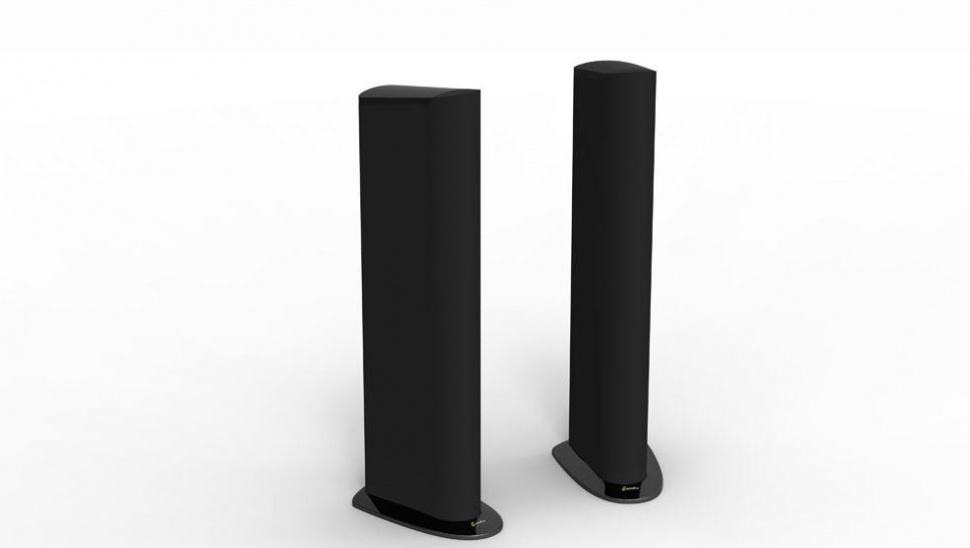
But I’m getting ahead of myself. You want the details, right? The Triton One’s feature a High-Velocity Folded Ribbon tweeter that’s sandwiched between two mid/bass drivers “with proprietary computer optimized cone design that assures smooth, extended response.” Further down the 54-inch column are the three 5-inch x 9-inch quadratic subwoofer bass drivers, which are powered by (wait for it) a 1600-watt digital amplifier. The bass performance is further enhanced by the two side-mounted “quadratic planar infrasonic bass radiators”. Got that?
When I first saw pictures of the GoldenEar Triton One’s, my first reaction was to condemn them on account of what we’ve been led to believe about crossover problems on designs featuring a lot of drivers, but hearing them convinced me otherwise. GoldenEar has clearly started from scratch on the Triton series, specifically designing not just the cabinets but trademarked loudspeakers using the latest technology and a whole lot of clever thinking that’s beyond a mere mortal such as myself to fully comprehend. The result is a loudspeaker that makes me drool from the side of my mouth (but please pretend you didn’t notice).
Of course, you can’t actually see any of the drivers or the ribbons on the Triton One (except on the pictures) because it’s got a sock over it, literally. My guess is that covering the unit with a cloth material (and yes, you can take it off if you need to) was their one concession to cost. Clearly, if the Triton series was finished in walnut or cherry, that would add a huge amount to the retail price. As it is, the speakers do rather look like a long black monolith of some kind, and stereophiles for whom looks are as important as sound may in fact find themselves backing off. While I like beautiful objects as much as the next guy, for me a loudspeaker is primarily about the sound I get from it, and if I can buy a pair that sound like $30K-plus, but only cost $8K, then I’m the cat that got the cream. The only partial caveat with the sock over speaker as far as I’m concerned is the likelihood that real felines might find they have an overwhelming desire to scratch it, but that can be sorted with surreptitious controlled use of deadly poisons (joke).
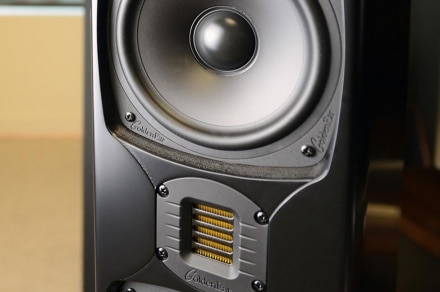
There’s a thick file of technical details on the Triton series, all of which is no doubt fascinating, but let’s stick to a few cool niblets for the sake of brevity and entertainment value. For instance, there’s that phenomenal amp to power the subwoofer; an amp that boasts “DSP design [that] not only yields extremely linear and low distortion response, but also dynamically controls operating parameters for optimum performance.” GoldenEar reckon that there are very real advantages of building the subwoofer into the speaker itself. “We get far superior integration and blending than can be achieved with separate subwoofers, even when using two. The two subwoofers in a pair of Tritons couple better to the air in the room, helping to better deal with the room’s eigenmodes [huh?] and smooth out response. Of course, the dual subwoofers are also intrinsically more powerful and couple together synergistically for more truly exceptional bass.”
GoldenEar also trumpets the way the form factor of the Triton’s (tall and sleek) “helps create truly magnificent 3D imaging with tremendous depth, height and width that extends well beyond the loudspeakers themselves. As with all GoldenEar speakers, development work is conducted at our Arnprior, Canada engineering facility utilizing our full-size anechoic chamber, which is an exact duplicate of the chamber at the NRC in Ottawa Canada.”
I hadn’t actually read this claim about 3D imaging when Paul from PQ let me have a pair in my humble abode for a few short weeks, but my mouth dropped open as soon as I heard the first few notes tumble out: it was immediately apparent that even without the benefit of electrostatic radiators, GoldenEar had figured out a way to produce a breathtakingly large, wide and deep soundfield that at first seems almost super-real.
Okay, this review is already over one thousand words long, and I haven’t played any music yet, have I? The first happy platter I placed on my gramophone (how old am I?] was ‘Protection’ from the recently remastered Massive Attack classic, Blue Lines and one of the Triton’s most stunning characteristics was immediately clear: its emphasis on drums and percussion. Now, I can see some audio buffs stroking their bum-fluff and tut-tutting at this fact, because integration between different instruments is what’s important in “true” hi-fi. But for me, the way the Triton One’s deal with percussion is revealing rather than domineering. They simply peel away layers of grime to reveal the clarity and dynamism of the drum-kit, and it’s a stunning thing to hear. While the loudspeaker’s on-board sub might get all the press, the tweeters go so much higher than just about any speaker I’ve heard, but not high in a destroy-your-ears fashion, they just ring true and clear in the most enjoyable way. When I note that you can hear more, I’m doing so to express something of the wonderment of hearing that. As I’ve learned over the years, hearing more isn’t necessarily hearing better, but with the Triton One’s, I genuinely felt that both of these were at work.
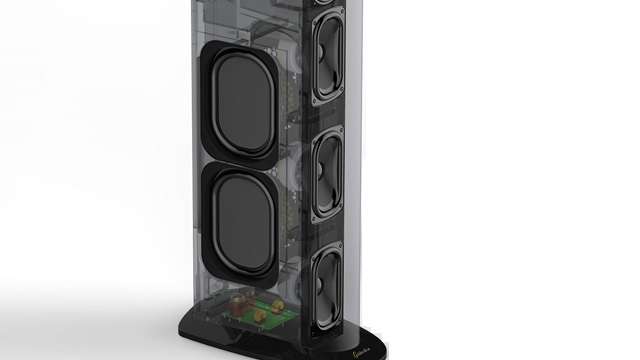 I expected the bass on ‘Protection’ to be overwhelming, but surprisingly, it was nicely contained and musical and in proportion with everything else. This proved true of everything I threw at the Triton One’s. Sure, when I turned it up loud, I could feel the way the air molecules were moving through the room with the sheer power, but there was no blubber. I was aiming for only one song from each artist, but I was so impressed that I had to taste a few other Massive Attack tracks. On ‘Teardrop’ (featuring the Cocteau Twins radiant Liz Frazer) the bass was out of this world in terms of rumbling depth, but still maintained its sonic integrity, while on ‘Karmacoma’, instead of just the distinctive rhythm I was introduced (as if for the first time) to its spooky ambient midrange sounds.
I expected the bass on ‘Protection’ to be overwhelming, but surprisingly, it was nicely contained and musical and in proportion with everything else. This proved true of everything I threw at the Triton One’s. Sure, when I turned it up loud, I could feel the way the air molecules were moving through the room with the sheer power, but there was no blubber. I was aiming for only one song from each artist, but I was so impressed that I had to taste a few other Massive Attack tracks. On ‘Teardrop’ (featuring the Cocteau Twins radiant Liz Frazer) the bass was out of this world in terms of rumbling depth, but still maintained its sonic integrity, while on ‘Karmacoma’, instead of just the distinctive rhythm I was introduced (as if for the first time) to its spooky ambient midrange sounds.
One of my all-time favourite albums is John McLaughlin’s haunting 1970 Devotion, a record that has not only awesome guitarring but sees him in almost Hendrix mode on a series of long groove-based wig-outs. It’s noisy, but also beautiful, but every pressing I’ve encountered has been harsh and sibilant. On the Triton One’s, the nasty frequencies were still there, but somehow less worrying (more transparent?) than on my MLs. More interesting were the incredible bass lines that run through the album and Buddy Miles’ incredible drumming, neither of which I’ve never really “heard” before.
Shall we try some jazz? On Oliver Nelson’s ‘Stolen Moments’ (from The Blues And The Abstract Truth) the speakers resolved the sound so well that I felt like it existed in the present, in a world that was some kind of elegant hybrid of digital and analogue tricknology, rather than an artefact from 1961. “It’s just ALL THERE”, I wrote in my notes, and I guess that’s a fairly enthusiastic recommendation. On this track, you can really hear the grain of the horn instruments when they’re flying solo, and the pattern etched by the horns when they fly in unison, and instead of ‘disappearing’ – as walking bass often does on a home stereo – you hear every note.
The Triton One’s sound just as good on resolutely electronic music, it turns out. Pansonic were one of the more sonically fascinating groups from the ‘90s, and the duo’s 2006 album Katodivaihe is really spectacular in its ability to make electronics sound dirty and rusted and full of texture, while industrial beats spring and splutter and splatter the soundfield. There were moments when it sounded like the sub-bass murmurs were trying to suck the wax out of my ears, and others where I pointlessly ranged around the room trying to find the source of all the rattles in my old house created by the low bass! Particularly gratifying was the head-frying ‘Transmission’ with its incredibly taut beats splaying back and forth on the stereo spectrum, and its depth-charge explosions.
Eighties group Japan regrouped in the early ‘90s as Rain Tree Crow, and their self-titled remastered album proved a highlight on the Triton One’s, with Steve Jansen’s drums bouncing around like an octopus on acid. So much detail, so much muscle, and effortless dynamics. And David Sylvian’s velvet vocal tones!
Speaking of the ‘80s, GoldenEar has somehow even figured out how to make those rather too-digital synths and drums of that era sound more life-like. For instance, Ryuichi Sakamoto’s Neo Geo might still have a certain thinness redolent of the era (it certainly could do with a remix) but the speakers manage to convey the music in a full widescreen manner, and Iggy Pop sounds awesome on his cameo on ‘Risky’. Once again, I’m not claiming that the Triton One’s have fraudulently created a new mix, but that they’re simply allowing a quality to shine that has heretofore been somehow suppressed. How do they do it? My guess? Magic or science!
What I noticed over and over again with the Triton One’s was their easy authority. Even at low volume I felt like I was hearing everything, and just about anywhere in the room I felt like the music was everywhere in the room, unlike my MLs, which have a sweet spot about as wide as a 50 cent coin. On the other hand, it was hard in my relatively small lounge to find the perfect sweet spot, and because I stupidly put the spikes on, I was less inclined to keep moving them around to find that spot. I would assume that with a slightly larger lounge and some careful placement, that perfect sweet spot would reveal itself.
But back to that easy authority. Maybe it was because of the powerful amp controlling the sub, but with my lovely Perreaux Audiant 80i in control of the mid-range and up, things were just about as picture perfect as I’ve ever heard on a loudspeaker, and the Triton One’s were easily as good overall as speakers I’ve heard in the $30K to $40K range. A big part of the charm of the Triton One’s is the holographic imaging, their pinpoint accuracy across the stereo image, and the sheer “size” of the sonic picture. Some might find that a bit overwhelming, but I always loved widescreen movies.
Personally, I find it hard to believe that there’s a stereo loudspeaker available for just a tad under $9000 that has so much to offer. It’s an extraordinary thing and as I’m next to penniless at the moment, presents me with a painful dilemma. I want to own a pair of Triton One’s more than you, dear reader, could imagine, but I would have to sell my soul to even raise the relatively benign sum required. While I can but dream, if you’ve got the disposable income, I would heartily recommend that you invest. You might just find that your entire record collection needs a fresh appraisal! GARY STEEL
RIGHT OF REPLY (WHERE WE LET BRAND AMBASSADORS RESPOND TO WITCHDOCTOR’S REVIEWS)
Paul Quilter of PQ Imports wrote with the following observations:


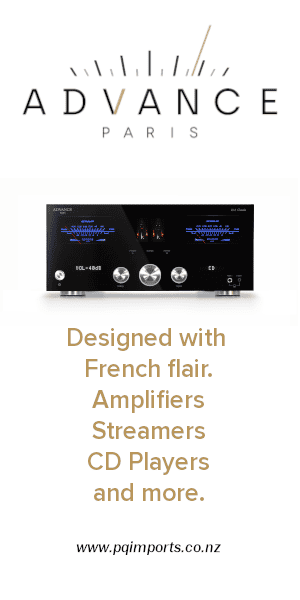


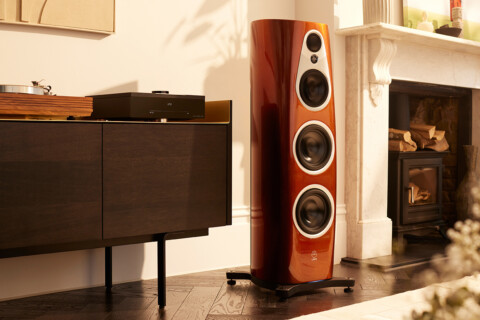
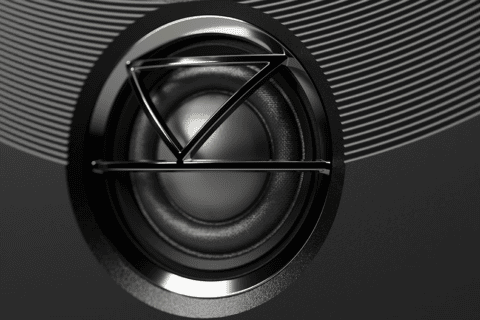
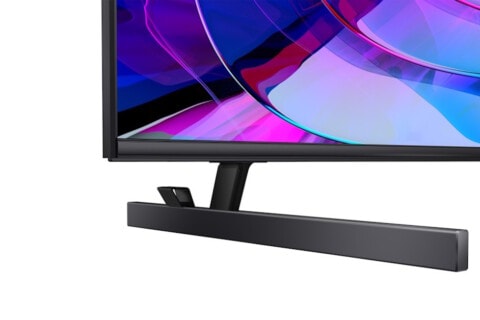
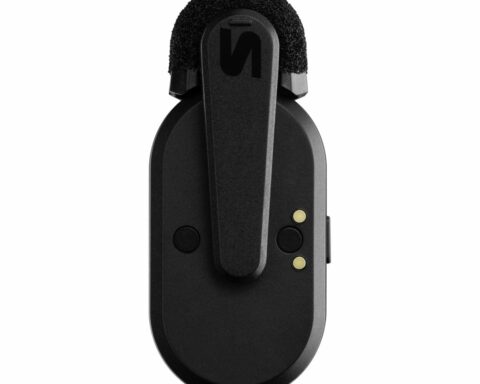
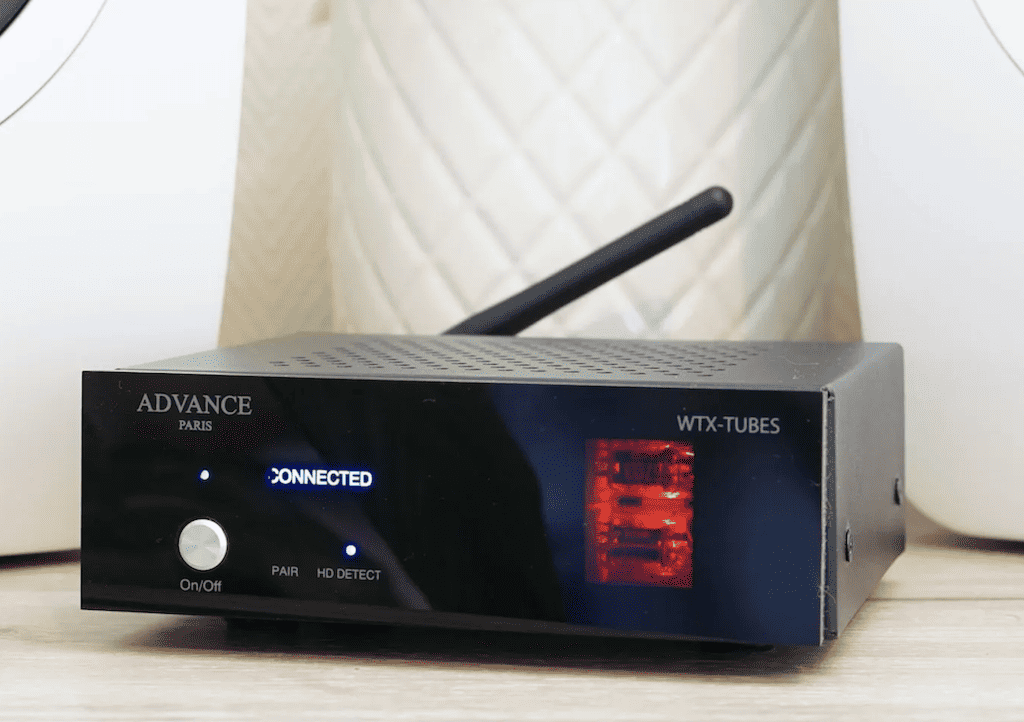

Hunted for a while last year, listened to Dynaudio and other speakers up to $35k but these blew me away as soon as they started playing in the demo room. My test source: ak210ii – cheap 2YP-MMM tributaries cable – Triton Ones. Very dynamic, big stage sound lounge cruisers.. Haven’t needed to use LFE as plenty clear sub from Speaker cables alone. Best match speaker cables and IC’s so far, for me only, from a Oppo 105d -> VTL IT-85 -> Tritons: tried Atlas Hyper 2 mkii and Hyper 2 IC. Very fun ‘loud’ great copper sound. Good price and happy for one year but now trying silver IC’s. Antipodies nice sound very clear and detailed but too bright for my Triton 1’s. Wireworld Gold Eclipse III+ also as Antipodes but smoother. Slinkylinks IC soon to try but feel silver needs careful source match to not get crispy. Best so far and great for constant all day music have been Analysis Plus Crystal Oval IC and Oval 9 speaker cable. Never fatigued listening, ever! Will try Oval 8 SpkCbl next week. Ultra smooth AP sound on the Tritons with HQ files from both oppo and metrum dacs, linking to just pre or B1 or with the amp only to tritons. To complete next week.. Netbook USB (foobar, kodi(Darbee cycle through oppo)or just Oppo as transport (if it doesn’t freeze)-> AP crystal USB or Coax cable -> Metrum Pavane -> 1st pair 0.5m AP crystal oval IC (yet to get 2nd pair)(current trying, WW Gold Eclipse II+ sounds nice here, gives treble lift, at 1st pair) -> DJW B1 Buffer (set static vol) -> want 2nd pair 0.5m AP crystal oval IC (any silver to ‘toppy here for me as 2nd pair)-> VTL IT-85(preamp in is sweeter than amp only) -> AP oval 9 (8 soon) -> Triton ones. Still testing bits. Amazing Triton sound as it is. Hard to leave the house or sleep. So smooth and present sound. Thanks again Santa, er, Sandy G.
Holy Smithfield, Mr. G. I thought MUSIC was the desideratum, rather than the exhaustive selection of cablement, input and buffering.
Santa has done right by you: the Triton One will allow us mortals to hear further into the lovely noise than we might have expected – but are you listening to the music or the sound of the system supplying it?
Like you, I always hoped the very next addition to my system would finally allow me to hit the total satisfaction button. It may well be, however, this never happens. There is always the nagging suspicion that we have settled for a fraction less than the complete best. And next year may well bring an improvement on the system we have, so expensively, assembled …
Rest quietly assured, your ears will gradually accept you ARE getting the best they can register – otherwise you are chasing a $$$ goal you will never catch to any sort of satisfaction.
Glad to read your last 21 words – from a listener who knows what it’s like.
TimZ
All these rave reviews of the Triton One reflect my own experience with these unique speakers, skeptical at first but being amazed by the first few notes. Where is all that sound coming from even before taking a seat? Simply put, these speakers breathe life into music and that is the goal. That bass is sublime: my SF Mementos give a credible account of the bass guitar in Talkin’ Bout a Revolution by Tracy Chapman, but the Tritons make it stand out with impact. And the bass is adjustable allowing me full range in a difficult space. Often when I listen to music I read or play with a computer but not with the Triton Ones. They demand your undivided attention to the musical secrets they reveal. Congratulations to Sandy Gross and his US-Canadian team of engineers.